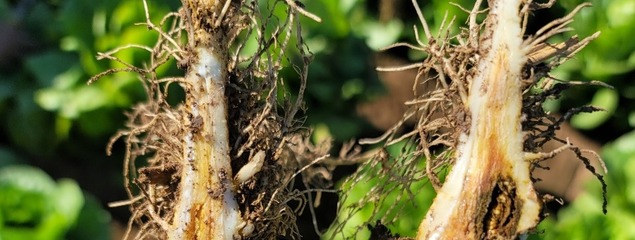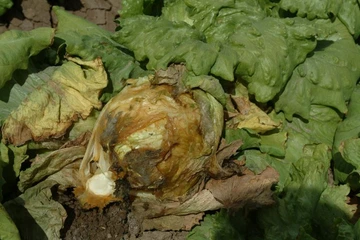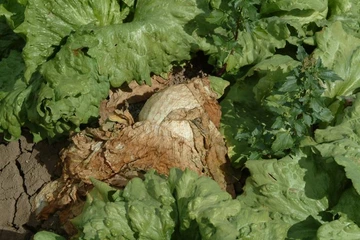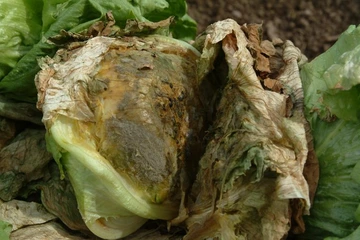
Plant Disease Management
Gray Mold
Management Practices
Cultural Control
Cultural control of the disease begins with a good field and greenhouse sanitation. Since the fungus lives indefinitely on decayed organic debris, all residue from previous crops should be either tilled into the soil or removed from the production areas. The fungus thrives in cool moist conditions. As such, management should focus on reducing free water from surfaces as much as possible. In the field, excessive leaf wetness will promote the disease and efforts should focus on reducing or avoiding sprinkle irrigation. As the fungus can infect a wide range of hosts or live on non-living plant residue, crop rotation has limited effects.

Chemical Control
There are several fungicides that are effective against gray mold on a variety of hosts. Much work has been done on controlling gray mold on grapes, strawberries, tomatoes, and floriculture products, and more limited work on control on lettuce, including a recent study by Matheron and Porchas. Most studies show similar findings in sensitivity to different products, as well as the common occurrence of fungicide resistance development in local strains of Botrytis. Therefore, all product use should be accompanied by a robust program of fungicide resistance management. Before using any product to control gray mold on lettuce, check product labels and restrictions and consult with your local Extension Specialists and Pest Control Advisers.

Chemical Control
Biological Control
Considering the importance of gray mold on a number of high-value crops such as grapes and strawberries, considerable research has been done in evaluating different biological control agents for efficacy in disease management. The most studied of these are strains of Trichoderma, a fungal parasite of other fungal species, and strains of Bacillus, which have been used widely as a biocontrol antagonist against a wide range of pathogens. Specific research on gray mold control on lettuce revealed that Pseudomonas, Ulocladium, and Epicocum species reduced lesions on lettuce by over 78%. Additional studies have explored the use of Coniothyrium minitans as a biocontrol agent, a fungus that parasitizes sclerotia, and has been used successfully to control lettuce drop disease.


